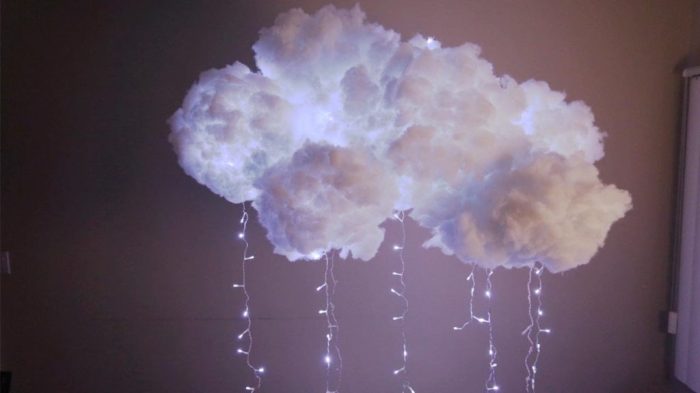DIY Clouds: Imagine conjuring up a fluffy white cloud right in your living room, or learning how the very clouds we see in the sky are formed. This guide dives into the fascinating world of clouds, exploring how to create them, understand their science, and even capture their beauty through art and photography.
From simple DIY projects like cloud-in-a-bottle experiments to delving into the intricacies of cloud computing and the role of clouds in weather forecasting, this guide offers a comprehensive exploration of this captivating topic. We’ll cover everything from the basics of cloud formation to the latest technological advancements, making this journey through the world of clouds both informative and entertaining.
Cloud Observation and Forecasting: Diy Clouds

Clouds are a vital part of the Earth’s atmosphere, playing a significant role in weather patterns and climate. Observing and understanding clouds can provide valuable insights into current weather conditions and help predict future weather changes.
Identifying Cloud Types
Cloud identification is crucial for understanding weather patterns. The World Meteorological Organization (WMO) classifies clouds into ten main types based on their appearance and altitude.
- High-level clouds (Cirrus, Cirrocumulus, Cirrostratus): These clouds are composed of ice crystals and are found at altitudes above 6,000 meters. They are often associated with fair weather, but can also indicate approaching storms.
- Mid-level clouds (Altostratus, Altocumulus, Altostratus lenticularis): These clouds are composed of water droplets and ice crystals and are found at altitudes between 2,000 and 6,000 meters. They can produce light rain or snow.
- Low-level clouds (Stratus, Stratocumulus, Nimbostratus): These clouds are composed of water droplets and are found at altitudes below 2,000 meters. They can produce drizzle, rain, or snow.
- Vertical clouds (Cumulus, Cumulonimbus): These clouds are characterized by their towering vertical development and can extend from low to high altitudes. They are associated with thunderstorms and heavy precipitation.
Role of Cloud Observations in Weather Forecasting
Cloud observations are essential for weather forecasting as they provide valuable information about the current state of the atmosphere. Meteorologists use cloud observations to:
- Identify weather patterns: The type, shape, and movement of clouds can indicate the presence of fronts, storms, and other weather systems.
- Predict precipitation: The type of cloud can indicate the likelihood and intensity of precipitation. For example, cumulonimbus clouds are associated with heavy thunderstorms, while nimbostratus clouds can produce steady rain.
- Estimate wind speed and direction: Cloud movement can provide insights into wind speed and direction.
- Monitor atmospheric stability: The presence and type of clouds can indicate the stability of the atmosphere, which is important for predicting the development of thunderstorms and other severe weather events.
Using Cloud Observations to Predict Weather Changes, Diy clouds
Anyone can use cloud observations to predict weather changes in their local area. Here’s a guide for beginners:
- Observe the sky: Pay attention to the type, shape, and movement of clouds.
- Identify cloud types: Use online resources or cloud identification charts to learn about different cloud types.
- Look for changes in cloud cover: A sudden increase in cloud cover can indicate approaching storms.
- Watch for cloud movement: Clouds moving quickly from west to east can indicate the arrival of a cold front.
- Combine cloud observations with other weather information: Pay attention to temperature, wind, and humidity changes, as these can also provide clues about upcoming weather changes.
Whether you’re a budding scientist, an aspiring artist, or simply curious about the world around you, this guide provides a unique perspective on clouds. From crafting your own cloud creations to understanding the science behind their formation and their impact on our lives, the journey through DIY Clouds is sure to be both enlightening and inspiring.
DIY clouds can bring a touch of whimsy to any space, but if you’re looking for a more grounding element, consider a DIY fountain for your backyard. A water feature can be a calming addition to your outdoor oasis, and you can find plenty of inspiration online, like this guide for building a DIY fountain backyard. Once you’ve added a fountain, you can even use it as a base for your DIY cloud project, creating a truly unique and serene atmosphere.
